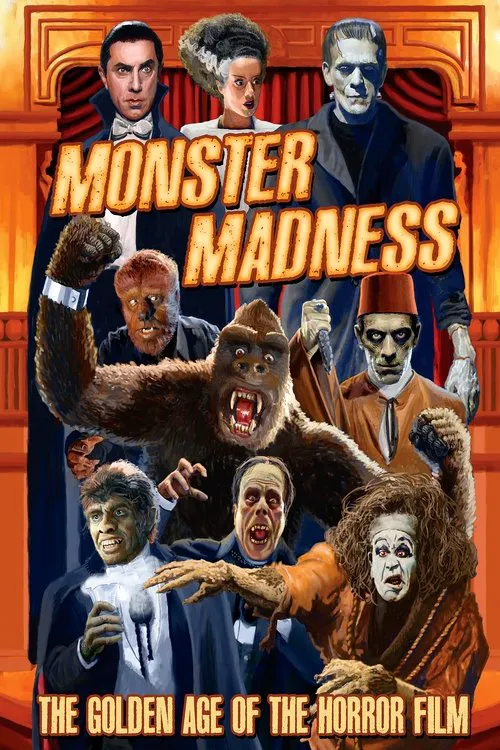Monster Madness: The Golden Age of the Horror Film

Trama
Monster Madness: The Golden Age of the Horror Film is an anthology documentary that brings forth a rich tapestry of iconic horror classics, transporting viewers to a bygone era when cinema was still in its formative years. The documentary sets its sights on the most enduring horror legends of the early to mid-20th century, dissecting the masterful craftsmanship of pioneers who dared to push the boundaries of the horror genre. At the forefront of the discussion are two of the most recognizable monsters in cinema history – Frankenstein's creature and his bride. These iconic creatures have been conjured to life in various iterations, from the 1931 groundbreaking masterpiece directed by James Whale, which introduced Boris Karloff as the titular monster, to the 1935 sequel, The Bride of Frankenstein, which is often regarded as one of the greatest films ever made. The Bride of Frankenstein is a testament to the unyielding passion and creative vision of James Whale, who breathed life into the Frankenstein mythological universe. The 1931 film Frankenstein is a masterclass in atmospheric tension and narrative restraint, as it skillfully crafts an unsettling narrative that masterfully explores the perils of unchecked scientific ambition and the blurring of moral lines. Boris Karloff's portrayal of the monster is an unforgettable spectacle, imbuing the character with a haunting vulnerability that transcends the boundaries of mere cinematic spectacle. This seminal film's influence cannot be overstated, paving the way for the creation of subsequent horror icons. No account of Monster Madness would be complete without mentioning the immortal vampire Count Dracula, who made his screen debut in the 1931 film of the same name. The cinematic interpretation of Bram Stoker's 1897 Gothic romance, starring Bela Lugosi in the lead role, was a game-changer that set the standard for cinematic depictions of the bloodsucking undead. Dracula's eerie presence, amplified by Lugosi's hypnotic acting, still sends shivers down the spines of horror fans to this day. Further, the documentary sheds light on the eerie, macabre world brought to life by Edgar Allan Poe in his works. The Black Cat (1934), directed by Edgar G. Ulmer and starring Boris Karloff and David Manners, offers a chilling portrayal of one man's descent into madness, driven by his own dark impulses. The film showcases Poe's fascination with themes of mortality, cruelty, and the blurred lines between reality and fantasy, all of which are skillfully woven into the tapestry of this haunting cinematic masterpiece. The film also delves into the realm of Universal's beloved Monsters, with a particular focus on the iconic werewolf, immortalized by Lon Chaney Jr. in the 1941 film The Wolf Man. This atmospheric, suspenseful tale explores the tragic narrative of a man grappling with his cursed nature, torn between his feral instincts and his humanity. The Wolf Man's haunting cinematography captures the essence of the full moon, underscoring the notion that our deepest fears are often rooted in the unknown. In its comprehensive examination of these classic horror films, Monster Madness offers a sweeping historical context that situates these cinematic creations within the broader social and cultural landscape of their time. These films not only captivate audiences with their haunting narratives but also function as testaments to the pioneering spirit of the filmmakers, who broke new ground in their exploration of the darker aspects of human experience. Monster Madness is a veritable journey into the haunted heart of cinema, celebrating a bygone era of cinematic innovation and artistic expression. By delving into the intricate web of influences, themes, and creative visions that define these horror classics, the documentary offers a deeply enriching experience for viewers, who will emerge with a newfound appreciation for the artistry, craftsmanship, and timeless allure of the Golden Age of horror cinema.
Reseñas
Recomendaciones


